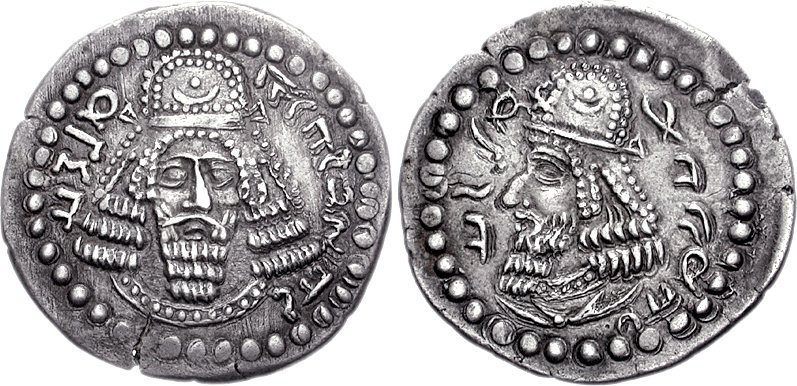The Rise And Fall Of The Sasanian Empire
David Tee - AncientPages.com - The area deemed today as Iran has had a long history. The Medes first ruled the nation in the 9th century BC. However, the Persians occupied Pars, and their name is associated with that region.
Initial coinage of founder Ardashir I, as King of Persis Artaxerxes (Ardaxsir) V. Circa CE 205/6-223/4. Obv: Bearded facing head, wearing diadem and Parthian-style tiara, legend "The divine Ardaxir, king" in Pahlavi. Rev: Bearded head of Papak, wearing diadem and Parthian-style tiara, legend "son of the divinity Papak, king" in Pahlavi. source
Different empires and conquerors have taken over the Iranian region through the years, including Alexander the Great and the Parthians. It was against the Parthians in 200 AD that Papak, the father of Ardashir I, and a Persian prince, who ruled Pars at the beginning of the third century, began his revolt and started to build a power base.
His death was the only thing that stopped Papak from becoming the first Sasanian ruler. After a power struggle with his brothers, Ardashir I became the first Sasanian ruler. Between 208 and 224 AD, Ardashir I fought his brothers, and finally, he executed them. He established the Sasanian empire, which lasted between 224 to 651 AD. At this time, the term "shah" was used to indicate ruler or king, and Ardashir I took the title 'Shahanshah' - King of Kings of Iran.
Important Sasanian Rulers
The Sasanian Empire lasted for over 400 years. During this time, many of its rulers excelled at different tasks, and it wasn't easy to pinpoint which were more significant than the others.
 The Sasanian Empire at its greatest extent c. 620, under Khosrow II * Normal domains * Greatest temporary extent during Byzantine–Sasanian War of 602–628. source
The Sasanian Empire at its greatest extent c. 620, under Khosrow II * Normal domains * Greatest temporary extent during Byzantine–Sasanian War of 602–628. source
After Ardashir I came Shapur I, 215 to 270 AD, but his claim to fame was mainly that he legitimized the Sasanian rule and helped solidify their hold on what is now called Iran. He was also a warrior king who could attack and exploit the weaknesses of the declining Roman Empire.
One of his military successes was the agreement between Shapur I and Philip the Arab, 244-249, whereas the latter received support for his rule over Rome by handing Shapur I Armenia.
Shapur II, 307 to 379, came to the throne of the Sasanian empire before he was born. His father was murdered, and he was crowned Shah before his birth. It seemed like a wise decision as Shapur II served his people well and expanded Sasanian territory at the expense of the Roman Empire.
Khosrau I, 501-579, was probably the most beloved Shah of all the Sasanian rulers. During his reign, he enacted various reforms, including the taxation system, which helped the Empire survive for another 100 years.
Besides this and his military reforms, Khosrau I is known for his literary and academic achievements. His Academy of Gundeshapur was one of the most respected learning centers in the known world at that time.
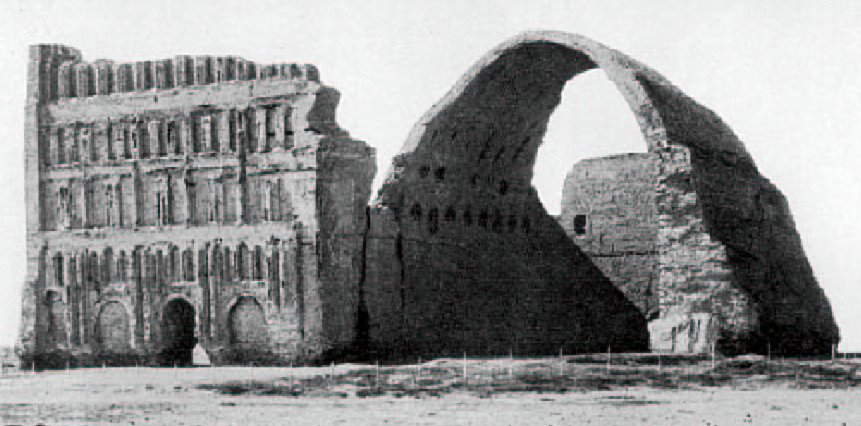 Taq Kasra is the most famous Persian monument from the Sasanian era. source
Taq Kasra is the most famous Persian monument from the Sasanian era. source
Part of his legacy would include his many building projects that included hydraulics. He rebuilt canals and farms to help strengthen his kingdom.
The Fall Of The Sasanian Empire
The Sasanian Empire started to fall apart when Khosrau's son, Khosro II 591-628, assumed the throne. Raised in an era of peace and luxury, Khosro II was wasteful and not a very good ruler.
While he successfully captured Jerusalem in one battle, his subsequent loss of the city allowed his enemies to make considerable inroads into his territory.
After his rule was over, his son, Yazdgird III, 624 to 651, came to the throne when he was 8. Yazdegerd III spent most of his reign on the run, losing much of the territory his ancestors had gained.
It is said that Yazdgird III was murdered by a peasant in 651.
Legacy Of The Sasanian Empire
Although the Sasanian Empire was known as the last Empire before the Muslim invasion and rule, it was not without its high points.
One of its most significant achievements is that Shah Khosrau established an excellent learning center. The Babylon Talmud was written during the time of the Sasanian Empire, and Sura and Pumbedita (the two most famous academies) became a vital part of Jewish scholarship.
Along with its influence on Rome, the Sasanian Zoroastrians moved to India to escape Islamic persecution. Their presence did play a role in the development of that country.
Written by – David Tee AncientPages.com Staff Writer
Updated on October 29, 2022
Copyright © AncientPages.com All rights reserved. This material may not be published, broadcast, rewritten or redistributed in whole or part without the express written permission of AncientPages.com
Expand for referencesReferences:
Daryaee T. Sasanian Persia The Rise and Fall of an Empire
Pourshariati P. Decline and Fall of the Sasanian Empire
More From Ancient Pages
-
 New Light On The Complex Evolution Of Our Feet
Evolution | Nov 22, 2023
New Light On The Complex Evolution Of Our Feet
Evolution | Nov 22, 2023 -
 Secrets Of The Famous Hellenistic-Era Kyrenia Shipwreck Revealed
Archaeology | Jun 28, 2024
Secrets Of The Famous Hellenistic-Era Kyrenia Shipwreck Revealed
Archaeology | Jun 28, 2024 -
 Researchers Develop New Ways Of Visualizing Ancient Small Objects By Combining Technologies
Archaeology | Apr 20, 2022
Researchers Develop New Ways Of Visualizing Ancient Small Objects By Combining Technologies
Archaeology | Apr 20, 2022 -
 Denisovan DNA Found In The Genome Of Oldest Human Fossil Discovered In Mongolia
Archaeology | Oct 30, 2020
Denisovan DNA Found In The Genome Of Oldest Human Fossil Discovered In Mongolia
Archaeology | Oct 30, 2020 -
 Xiahou Dun ‘The One-Eyed’: Faithful Warrior, One Of Cao Cao’s Talented Officers
Featured Stories | Aug 14, 2019
Xiahou Dun ‘The One-Eyed’: Faithful Warrior, One Of Cao Cao’s Talented Officers
Featured Stories | Aug 14, 2019 -
 Early Humans Were Walking 7 Million Years Ago – Hominin Fossils Reveal
Archaeology | Sep 1, 2022
Early Humans Were Walking 7 Million Years Ago – Hominin Fossils Reveal
Archaeology | Sep 1, 2022 -
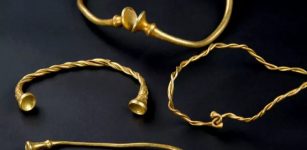 Unique 2,500-Year-Old Celtic Jewelry – Oldest Iron Age Gold Treasure Ever Found In Britain
Archaeology | Mar 3, 2017
Unique 2,500-Year-Old Celtic Jewelry – Oldest Iron Age Gold Treasure Ever Found In Britain
Archaeology | Mar 3, 2017 -
 Who Is Secretly Keeping A Watching Eye On Tibetan Monasteries?
Ancient Mysteries | May 14, 2019
Who Is Secretly Keeping A Watching Eye On Tibetan Monasteries?
Ancient Mysteries | May 14, 2019 -
 Sōhei And Yamabushi: Fearsome Ancient Warrior Monks Of Japan
Featured Stories | Feb 26, 2022
Sōhei And Yamabushi: Fearsome Ancient Warrior Monks Of Japan
Featured Stories | Feb 26, 2022 -
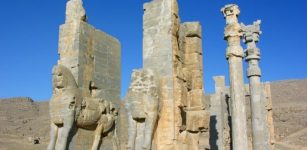 Discovery Of 1500-Year-Old Celestial Observatory Dated To Sassanian Empire
Archaeology | Mar 16, 2017
Discovery Of 1500-Year-Old Celestial Observatory Dated To Sassanian Empire
Archaeology | Mar 16, 2017 -
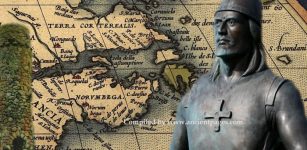 Is Legendary Norumbega In North America A Lost Viking Settlement?
Featured Stories | Jan 8, 2021
Is Legendary Norumbega In North America A Lost Viking Settlement?
Featured Stories | Jan 8, 2021 -
 Unlocking The Secrets Of The Ancient Coastal Maya
Archaeology | Jul 8, 2022
Unlocking The Secrets Of The Ancient Coastal Maya
Archaeology | Jul 8, 2022 -
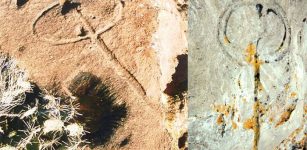 Puzzling Water Glyphs Of The American Southwest – Ancient Astronomical Symbols, Directional Signs Or Something Else?
Featured Stories | Apr 15, 2023
Puzzling Water Glyphs Of The American Southwest – Ancient Astronomical Symbols, Directional Signs Or Something Else?
Featured Stories | Apr 15, 2023 -
 Unique discovery of unknown inscription may change the history of scripts as we know it.
News | Aug 23, 2015
Unique discovery of unknown inscription may change the history of scripts as we know it.
News | Aug 23, 2015 -
 Mazu: Chinese Goddess Of The Sea – Protector Of Fishermen
Chinese Mythology | Apr 16, 2016
Mazu: Chinese Goddess Of The Sea – Protector Of Fishermen
Chinese Mythology | Apr 16, 2016 -
 Eriu: Powerful Irish Goddess And Sacred Uisneach Hill Where She And God Lugh Are Buried
Celtic Mythology | Feb 15, 2019
Eriu: Powerful Irish Goddess And Sacred Uisneach Hill Where She And God Lugh Are Buried
Celtic Mythology | Feb 15, 2019 -
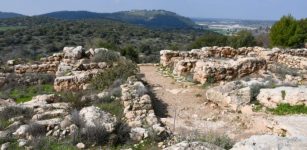 Story Of David And Goliath Linked To Horvat Qeiyafa In The Valley Of Elah, Israel
Archaeology | Feb 22, 2022
Story Of David And Goliath Linked To Horvat Qeiyafa In The Valley Of Elah, Israel
Archaeology | Feb 22, 2022 -
 Mystery Of The Scottish Medieval Wanderer And The Bog Bodies At Cramond Investigated By Scientists
Archaeology | Mar 28, 2022
Mystery Of The Scottish Medieval Wanderer And The Bog Bodies At Cramond Investigated By Scientists
Archaeology | Mar 28, 2022 -
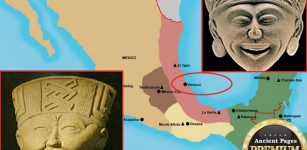 Curious Pre-Columbian Clay Figurines With Smiling Faces From Veracruz
Ancient Mysteries | Jan 29, 2018
Curious Pre-Columbian Clay Figurines With Smiling Faces From Veracruz
Ancient Mysteries | Jan 29, 2018 -
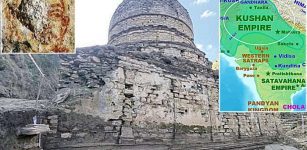 2,000-Year-Old Buddhist Complex Unearthed In Northern Swat, Pakistan
Archaeology | Feb 20, 2021
2,000-Year-Old Buddhist Complex Unearthed In Northern Swat, Pakistan
Archaeology | Feb 20, 2021

